What is the Difference Between Packing and Packaging?
Article by : Lussopack
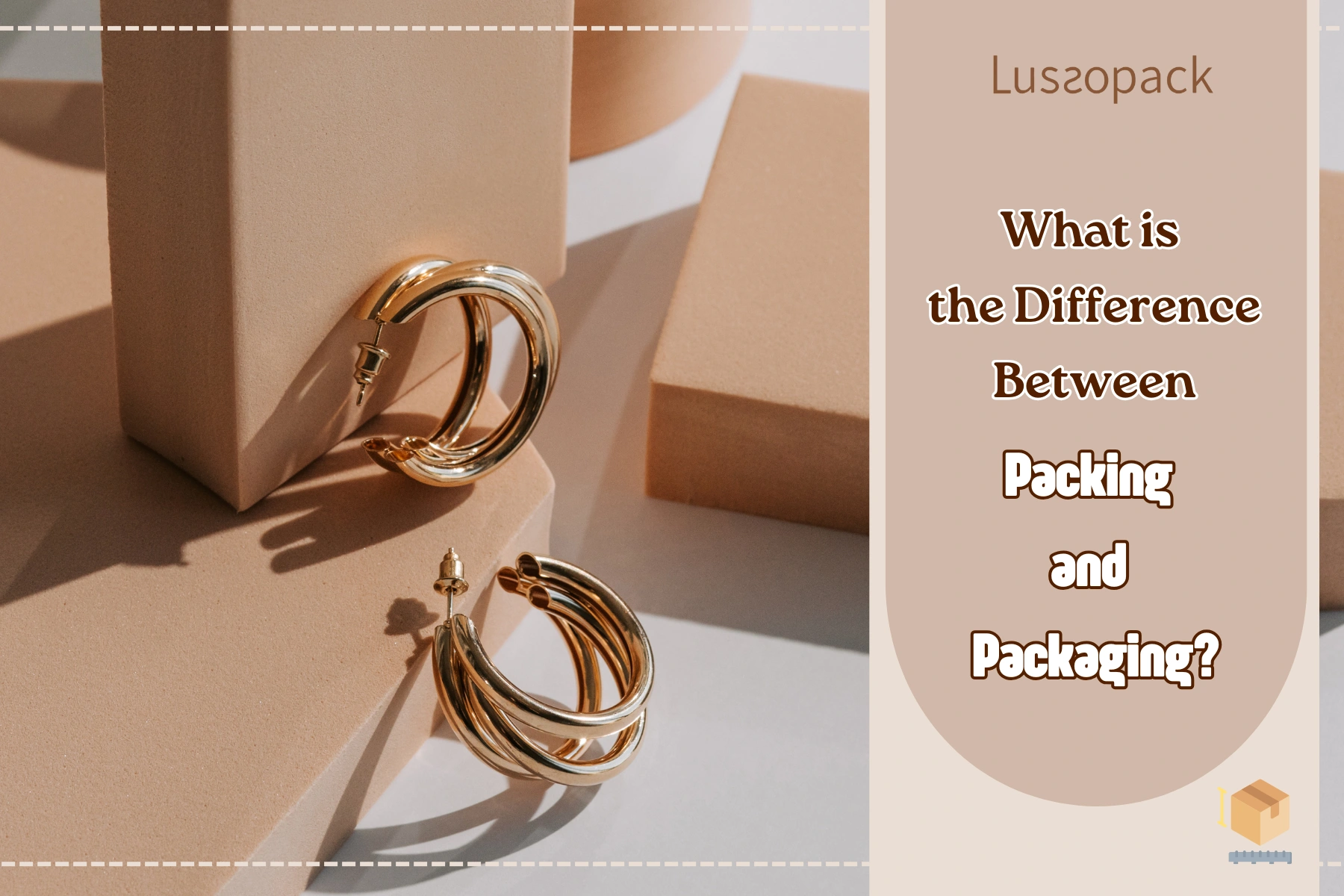
In the luxury market, every detail matters. From the feel of the box to the final delivery, each element shapes how customers perceive your brand. But here’s a common question that arises even among professionals: what is the difference between packing and packaging? While the terms are often used interchangeably, they represent very different functions—especially in industries like jewelry, watches, ring box, and other premium goods.
Understanding the difference between packaging and packing is essential. Your brand story, customer experience, and product safety all depend on getting this distinction right. This article will explore what packing and packaging mean, how they differ, and why both play a key role in luxury branding and logistics. We’ll also look at examples and how you can elevate both aspects within your brand.
Definitions: What Is Packaging vs. What Is Packing?
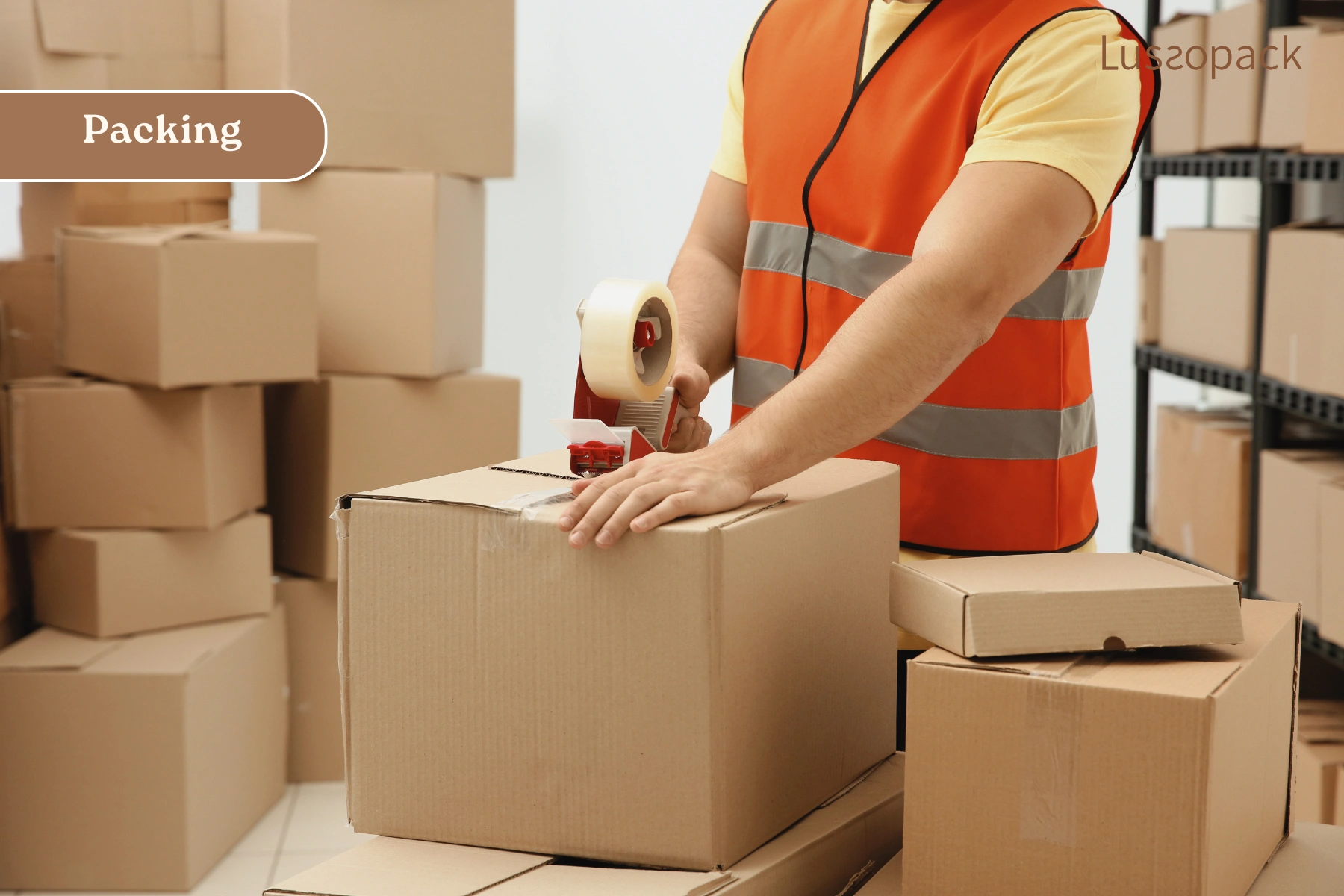
Packaging refers to the design, materials, and branding used to encase a product. In luxury markets, this is an extension of your identity. It includes everything from structure and color to texture and typography. Luxury packaging often becomes part of the product experience itself.
Packing is the operational process of securing products for storage, handling, or delivery. It involves selecting materials that cushion, contain, and protect the product and its packaging from damage. Think bubble wrap, corrugated boxes, fillers, and sealants.
It’s essential to distinguish between these two, especially when designing systems that involve creative, marketing, and supply chain teams
Example of Packing and Packaging:
Imagine a luxury watch as an example of packing and packaging differences.
- Packaging is the curated presentation of the product:
The watch arrives in a handcrafted box wrapped in vegan leather, lined with brushed suede in the brand’s signature hue. A discreet monogram, magnetic lid, and hidden drawer for documentation elevate the unboxing experience. It’s not just a container—it’s part of the brand story.
- Packing ensures safe delivery:
Once packaged, the box is cushioned with foam, placed in a double-walled carton, and stabilized with biodegradable air pillows. A tamper-evident seal and branded tape complete the shipment, balancing protection with polished professionalism.
This holistic setup ensures that the luxury packaging—and the priceless product it protects—arrives in pristine condition. It highlights the difference between packing and packaging (with examples) and demonstrates how each component fulfills a unique, vital role in the customer journey.
Key Functions and Purposes: Packaging vs. Packing

In the luxury goods sector, packaging and packing serve distinct yet complementary roles. One elevates perception; the other ensures protection. Together, they define the journey from brand to buyer.
1. Packaging
Luxury packaging serves multiple roles—it communicates value, tells a story, and sets the tone for the entire customer experience.
Brand Identity
- Premium packaging aligns with the values and aesthetics of the brand. Every detail, from structure and finish to color psychology, contributes to storytelling.
- The packaging often signals authenticity and premium status before the product is even touched.
Customer Experience
- Packaging contributes directly to emotional resonance.
- An unboxing moment is no longer a trend but a marketing opportunity. Influencers and loyal customers often share these moments on social media, turning your packaging into free advertising.
- For luxury buyers, expectations are high. The feel, the sound of the box opening, and even the scent of the materials can elevate perception.
Product Protection (Primary Layer)
- Quality packaging keeps items safe from surface scratches, humidity, and environmental wear during shelf storage or display.
- It also ensures that delicate elements—such as jewels or timepieces—remain in pristine condition before the product is packed for shipping.
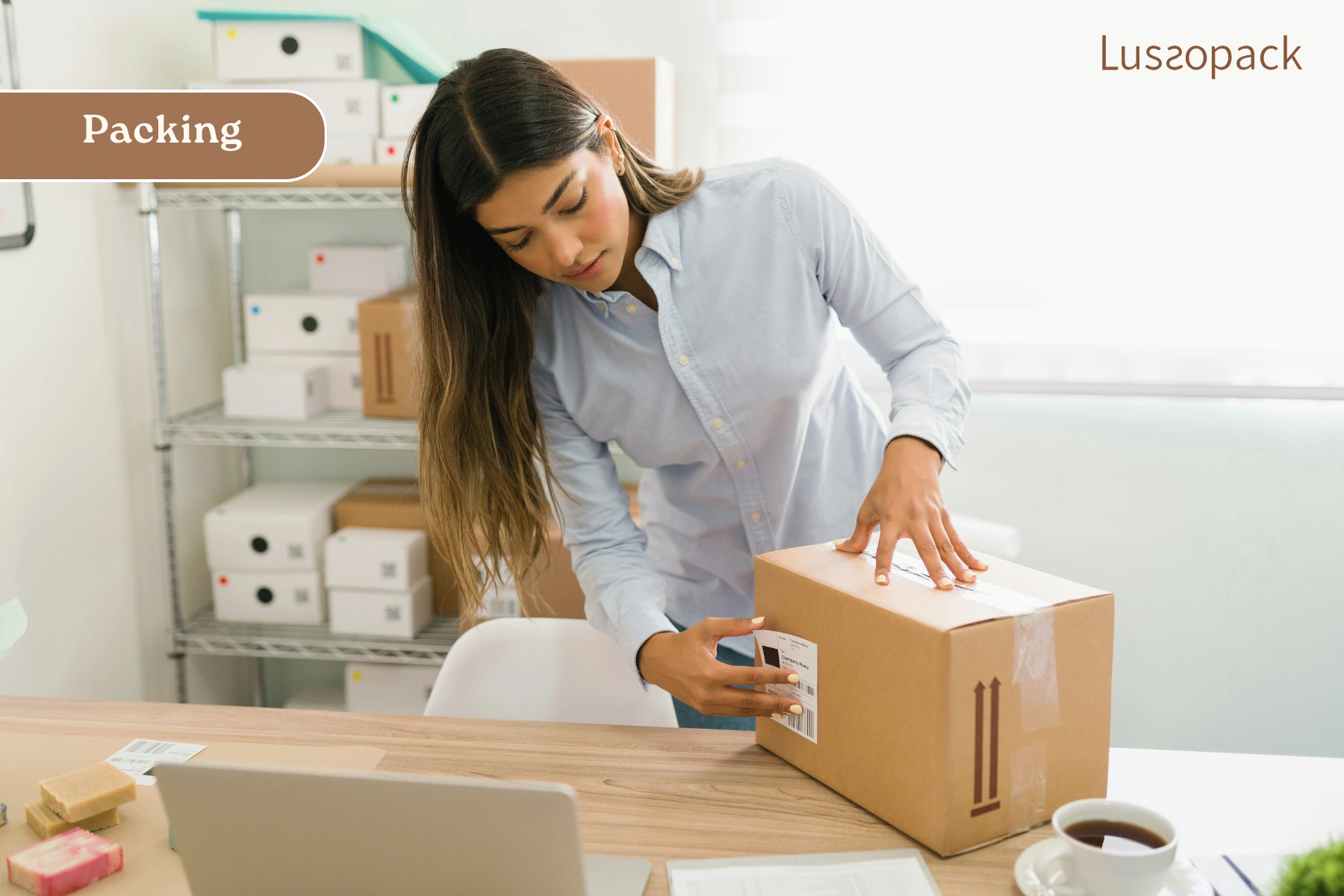
2. Packing
Packing is all about function and logistics. Packing is the technical side of the equation. While packaging improves brand perception, packing safeguards that investment during transit and storage.
Safe Delivery
- Packing is responsible for protecting the product and its packaging during transit.
- A box might face pressure, jolts, or accidental drops during international shipping. Proper packing prevents impact damage.
- Using the right combination of internal cushioning and external containers is key to this safety.
Shipping Efficiency
- Good packing considers weight-to-volume ratio, allowing brands to minimize shipping costs without compromising safety.
- In e-commerce business, fulfillment centers often handle hundreds of orders. Well-packed items streamline operations and reduce pick-and-pack time.
Inventory Handling
- Proper packing improves warehouse operations. Sturdy, uniform outer boxes stack neatly and reduce clutter.
- Barcoding, labeling, and compartmentalization are easier when packing is done with logistics in mind.
Understanding the importance of packing and packaging helps luxury brands reduce operational costs while maximizing perceived value. Together, they form the full circle of product presentation and delivery.
Materials Used in Packaging vs. Packing
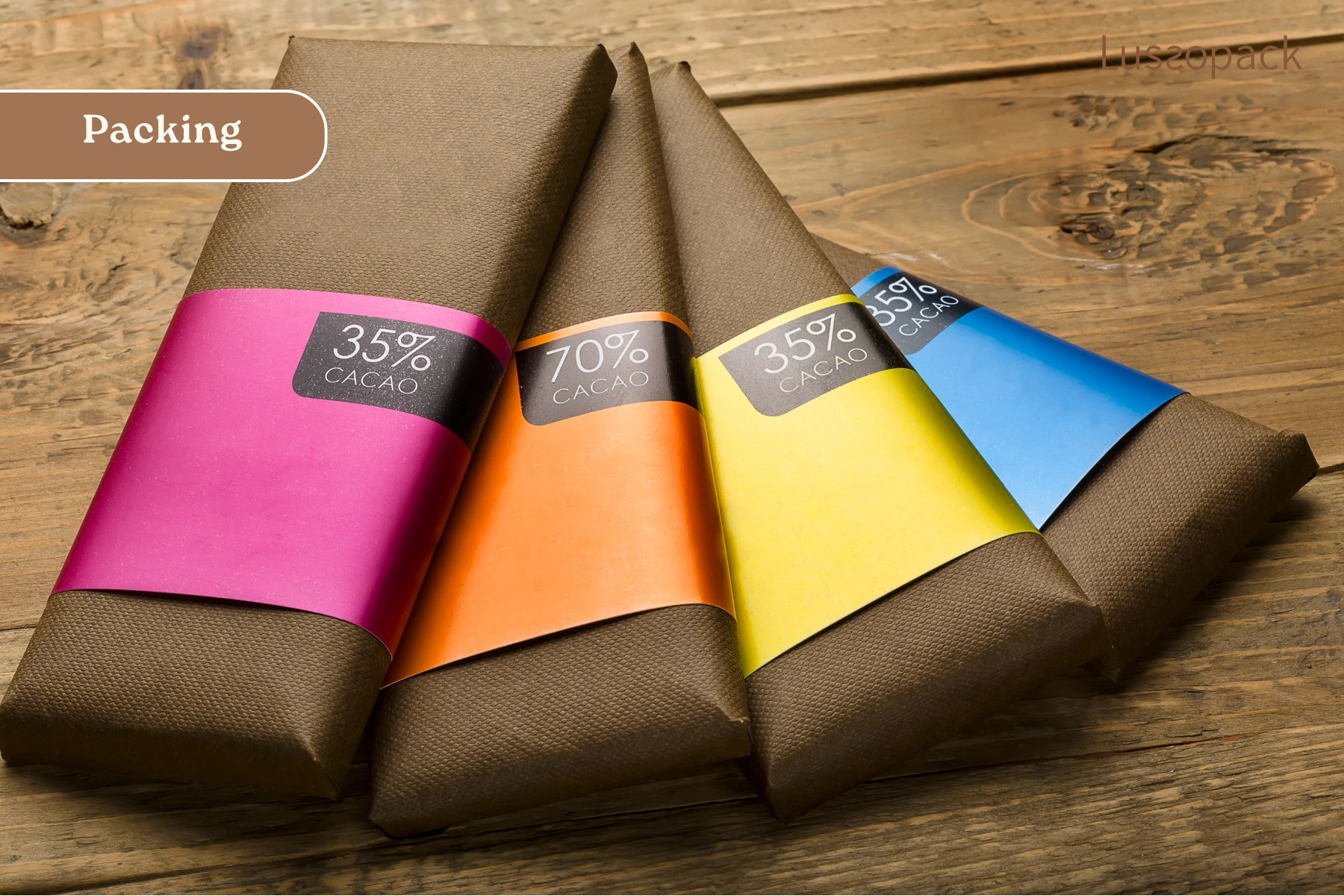
When it comes to material selection, packing and packaging materials differ significantly in both form and function.
Packaging Materials (luxury-focused)
- Rigid boxes: Constructed from durable board and wrapped in premium paper; these boxes are often reusable and reinforce exclusivity.
- Magnetic closures: Offer a sleek, seamless way to secure packaging while adding a tactile sense of closure.
- Velvet, suede, or silk linings: These elevate the unboxing experience with luxurious textures.
- Custom inserts: Die-cut or molded to the shape of the product; prevent movement and showcase the item elegantly.
- Embossed or foiled branding: These subtle, high-end embellishments make logos memorable and add visual interest.
- Sustainable substrates: From soy-based inks to compostable coatings, luxury brands are embracing eco-materials without sacrificing beauty.
Packing Materials
- Corrugated cardboard: Layered for strength and often custom-cut for snug fits around primary packaging.
- Kraft paper & shredded fillers: These are recyclable, biodegradable, and now come in high-end versions for luxury brands.
- Foam sheets and bubble wrap: Still industry staples, especially when shipping fragile items internationally.
- Biodegradable air pillows: These are more sustainable than their plastic counterparts and ideal for space-filling.
- Tamper-proof sealing tape: This secures parcels and gives customers peace of mind about product integrity.
Using materials that align with brand ethics and consumer expectations helps elevate your positioning. For luxury brands, sustainability is no longer optional—even in packing. Selecting the right materials for each stage increases both beauty and safety. The goal is a seamless transition from warehouse to the customer’s hands.
Role in the Luxury Sector
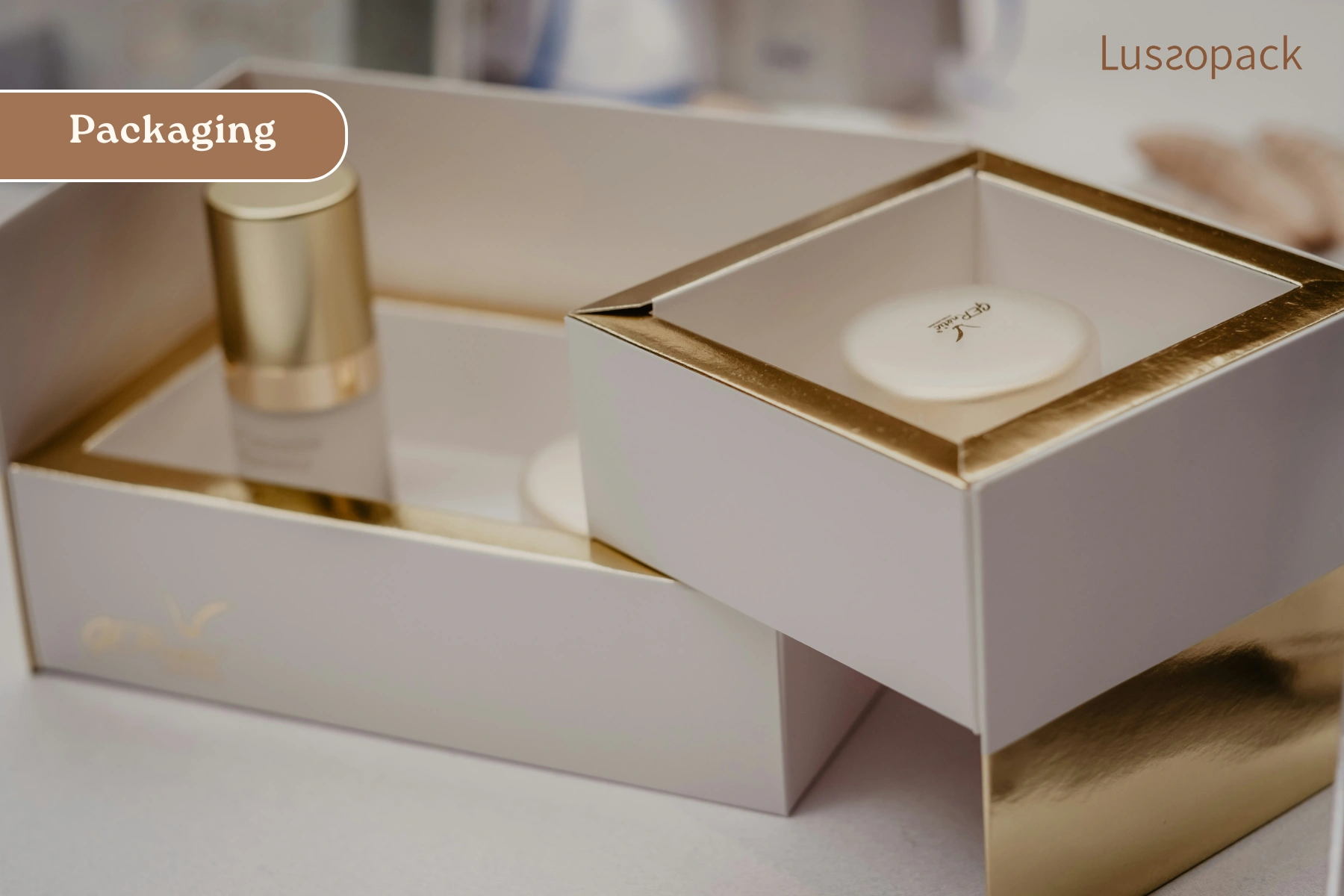
In the luxury sector, packaging is an immersive brand experience.
A well-designed box can:
- Increase perceived value: Clients associate thoughtful presentation with product quality.
- Influence purchasing decisions: Premium packaging can be a deciding factor between two otherwise similar products.
- Encourage social media sharing: Packaging designed with aesthetics in mind generates organic marketing through unboxing videos and user posts.
Luxury Example:
A high-end necklace presented in a custom-designed case, lined with velvet and fitted with a mini drawer for authenticity papers, doesn’t just secure the product—it creates a moment.
Meanwhile, packing and packaging in logistics ensure that the emotional investment made in the packaging isn't lost during distribution.
Key logistics elements include:
- Double-boxing fragile or high-value goods: Reduces shock during handling and transit.
- Climate-resistant insulation for sensitive materials: Protects luxury goods that may be affected by humidity or extreme temperatures.
- Lightweight fillers: Minimize shipping fees while offering internal support.
When packaging and packing work harmoniously, the result is a polished, flawless experience for the customer and operational efficiency for the brand.
Common Misconceptions
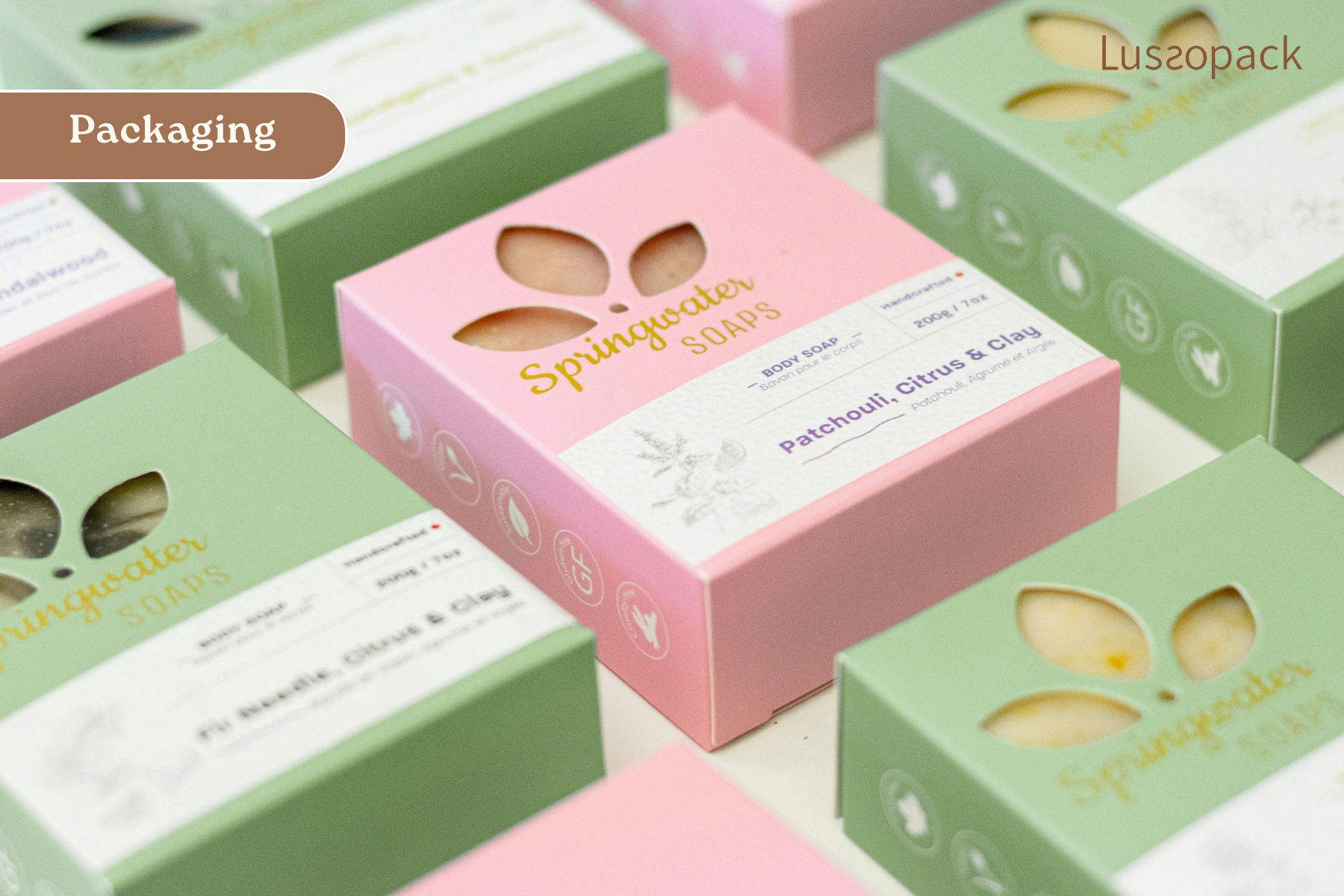
Many businesses conflate packing with packaging, but the implications can be costly. Misusing these terms can lead to:
- Misaligned vendor expectations: A designer may focus on aesthetics, while logistics teams worry about damage rates.
- Poor allocation of budget: Overspending on packaging and under-investing in packing can lead to loss.
- Missed branding opportunities: Generic packing solutions can undermine even the most beautiful packaging.
Real-world Scenario:
A luxury jewelry brand invests thousands into custom packaging—foil-stamped boxes with rich velvet interiors. However, to save costs, they ship using thin mailers and no internal padding. Boxes arrive damaged. The customer’s first impression? Poor quality.
So, is packing and packaging same? Clearly not. Understanding the packing vs packaging meaning enables better team communication and smarter operational planning. It also helps ensure that both creative and logistics departments are on the same page when executing product rollouts. This clarity is essential for launching limited editions, seasonal collections, or e-commerce campaigns.
At Lussopack, we craft custom packaging that strengthen your brand story. But we don’t stop there. We consider how your packaging fits into the broader logistics chain.
We design around:
- Fragility of the product: Whether it’s a delicate stone or a mechanical watch, we understand the technical tolerances involved.
- Unboxing choreography: Every layer is engineered to offer a delightful sequence of reveals.
- Sustainability goals: We recommend recyclable, FSC-certified, or biodegradable materials wherever possible.
- Shipping regulations: We stay up-to-date on international requirements to ensure smooth delivery.
We also help brands choose appropriate packing materials and systems to ensure that their packaging arrives exactly as intended.
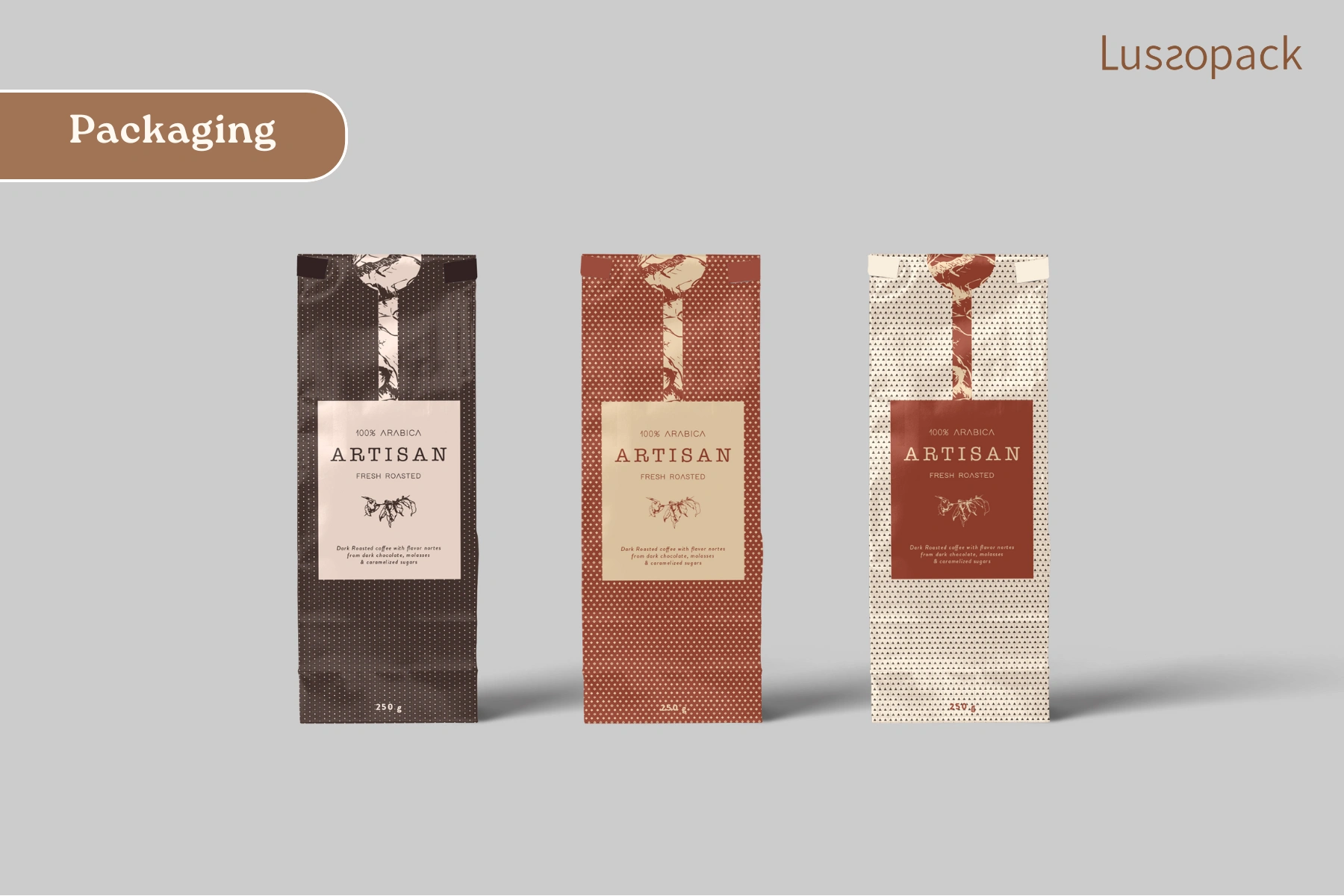
Lussopack specializes in packaging systems that unify beauty and protection. Our approach blends elegant design with structural reliability, ensuring your product arrives safely and makes a lasting impression. Whether you’re seeking a jewelry box that embodies your brand or a comprehensive logistics-ready solution, we craft packaging that supports both story and scale. With sustainability and craftsmanship at the core of everything we do, our team is ready to bring your vision to life. Explore our curated collection or contact us today to begin your journey toward packaging excellence.
Interesting Blogs

How Sustainable Packaging Minimize Ecological Damage
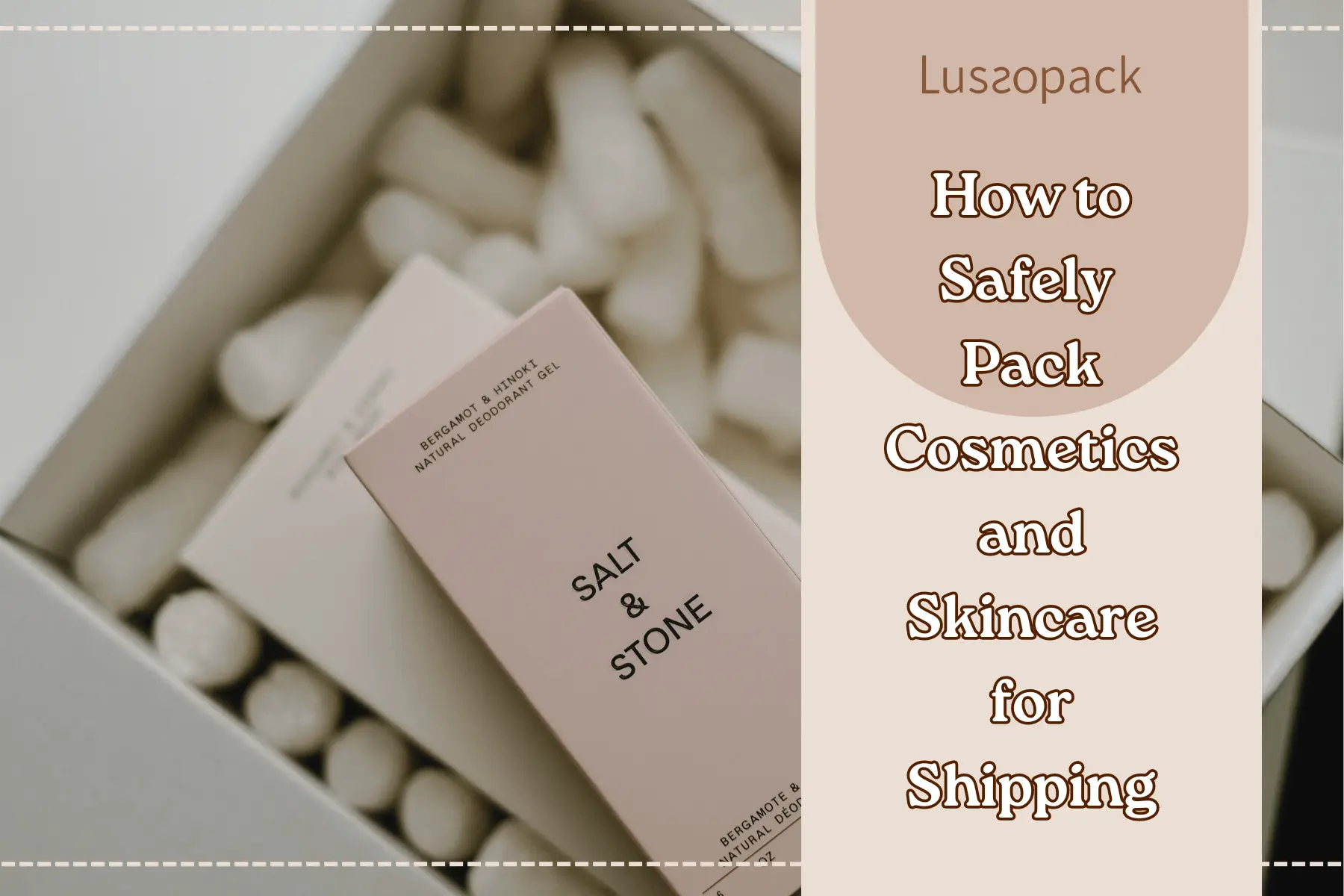
How to Safely Pack Cosmetics and Skincare for Shipping

Why Brand Packaging Is Important and How to Choose Them
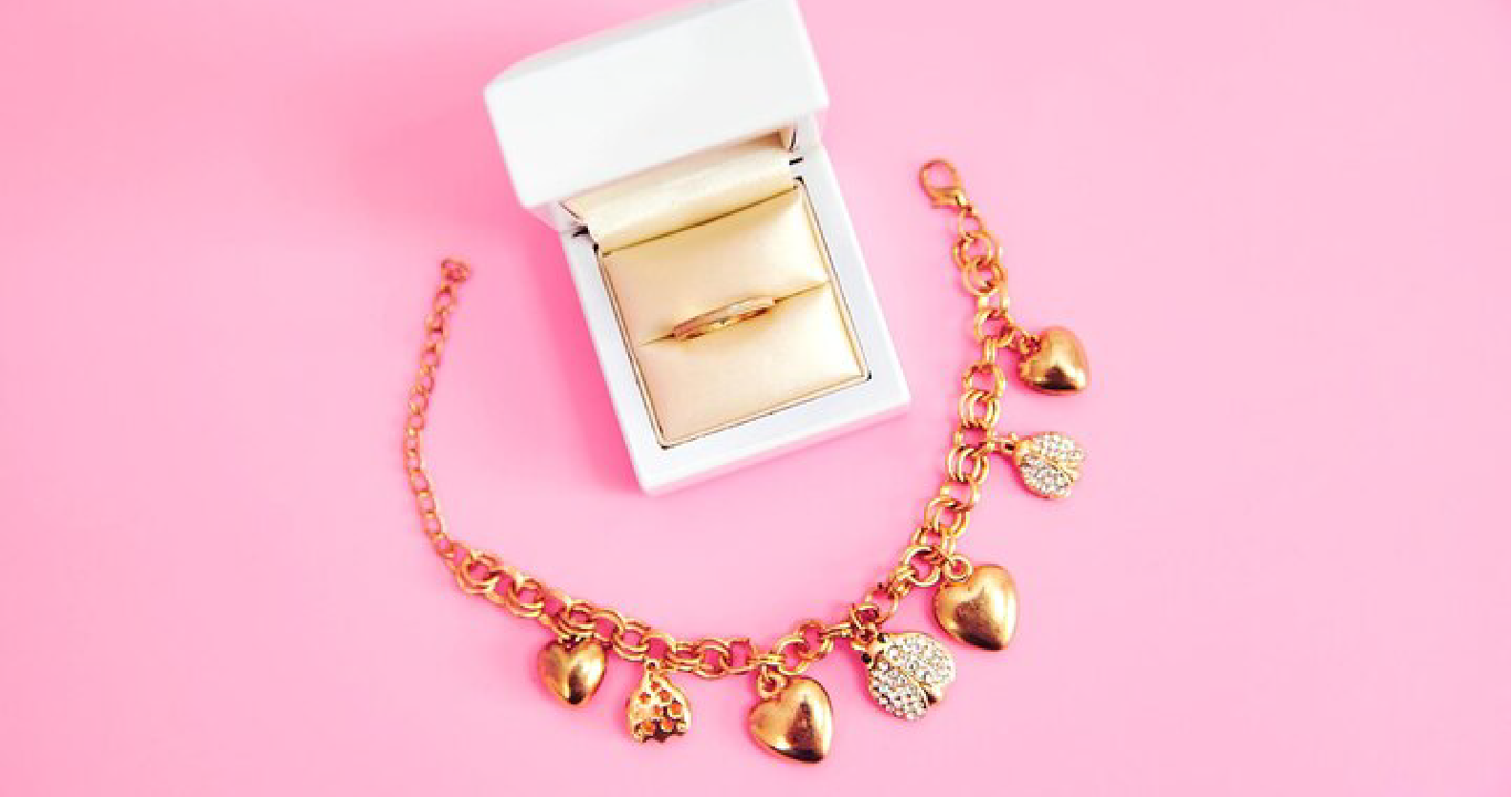
E-commerce Packaging Market
What is the Difference Between Packing and Packaging?
Article by : Lussopack

In the luxury market, every detail matters. From the feel of the box to the final delivery, each element shapes how customers perceive your brand. But here’s a common question that arises even among professionals: what is the difference between packing and packaging? While the terms are often used interchangeably, they represent very different functions—especially in industries like jewelry, watches, ring box, and other premium goods.
Understanding the difference between packaging and packing is essential. Your brand story, customer experience, and product safety all depend on getting this distinction right. This article will explore what packing and packaging mean, how they differ, and why both play a key role in luxury branding and logistics. We’ll also look at examples and how you can elevate both aspects within your brand.
Definitions: What Is Packaging vs. What Is Packing?

Packaging refers to the design, materials, and branding used to encase a product. In luxury markets, this is an extension of your identity. It includes everything from structure and color to texture and typography. Luxury packaging often becomes part of the product experience itself.
Packing is the operational process of securing products for storage, handling, or delivery. It involves selecting materials that cushion, contain, and protect the product and its packaging from damage. Think bubble wrap, corrugated boxes, fillers, and sealants.
It’s essential to distinguish between these two, especially when designing systems that involve creative, marketing, and supply chain teams
Example of Packing and Packaging:
Imagine a luxury watch as an example of packing and packaging differences.
- Packaging is the curated presentation of the product:
The watch arrives in a handcrafted box wrapped in vegan leather, lined with brushed suede in the brand’s signature hue. A discreet monogram, magnetic lid, and hidden drawer for documentation elevate the unboxing experience. It’s not just a container—it’s part of the brand story.
- Packing ensures safe delivery:
Once packaged, the box is cushioned with foam, placed in a double-walled carton, and stabilized with biodegradable air pillows. A tamper-evident seal and branded tape complete the shipment, balancing protection with polished professionalism.
This holistic setup ensures that the luxury packaging—and the priceless product it protects—arrives in pristine condition. It highlights the difference between packing and packaging (with examples) and demonstrates how each component fulfills a unique, vital role in the customer journey.
Key Functions and Purposes: Packaging vs. Packing

In the luxury goods sector, packaging and packing serve distinct yet complementary roles. One elevates perception; the other ensures protection. Together, they define the journey from brand to buyer.
1. Packaging
Luxury packaging serves multiple roles—it communicates value, tells a story, and sets the tone for the entire customer experience.
Brand Identity
- Premium packaging aligns with the values and aesthetics of the brand. Every detail, from structure and finish to color psychology, contributes to storytelling.
- The packaging often signals authenticity and premium status before the product is even touched.
Customer Experience
- Packaging contributes directly to emotional resonance.
- An unboxing moment is no longer a trend but a marketing opportunity. Influencers and loyal customers often share these moments on social media, turning your packaging into free advertising.
- For luxury buyers, expectations are high. The feel, the sound of the box opening, and even the scent of the materials can elevate perception.
Product Protection (Primary Layer)
- Quality packaging keeps items safe from surface scratches, humidity, and environmental wear during shelf storage or display.
- It also ensures that delicate elements—such as jewels or timepieces—remain in pristine condition before the product is packed for shipping.

2. Packing
Packing is all about function and logistics. Packing is the technical side of the equation. While packaging improves brand perception, packing safeguards that investment during transit and storage.
Safe Delivery
- Packing is responsible for protecting the product and its packaging during transit.
- A box might face pressure, jolts, or accidental drops during international shipping. Proper packing prevents impact damage.
- Using the right combination of internal cushioning and external containers is key to this safety.
Shipping Efficiency
- Good packing considers weight-to-volume ratio, allowing brands to minimize shipping costs without compromising safety.
- In e-commerce business, fulfillment centers often handle hundreds of orders. Well-packed items streamline operations and reduce pick-and-pack time.
Inventory Handling
- Proper packing improves warehouse operations. Sturdy, uniform outer boxes stack neatly and reduce clutter.
- Barcoding, labeling, and compartmentalization are easier when packing is done with logistics in mind.
Understanding the importance of packing and packaging helps luxury brands reduce operational costs while maximizing perceived value. Together, they form the full circle of product presentation and delivery.
Materials Used in Packaging vs. Packing

When it comes to material selection, packing and packaging materials differ significantly in both form and function.
Packaging Materials (luxury-focused)
- Rigid boxes: Constructed from durable board and wrapped in premium paper; these boxes are often reusable and reinforce exclusivity.
- Magnetic closures: Offer a sleek, seamless way to secure packaging while adding a tactile sense of closure.
- Velvet, suede, or silk linings: These elevate the unboxing experience with luxurious textures.
- Custom inserts: Die-cut or molded to the shape of the product; prevent movement and showcase the item elegantly.
- Embossed or foiled branding: These subtle, high-end embellishments make logos memorable and add visual interest.
- Sustainable substrates: From soy-based inks to compostable coatings, luxury brands are embracing eco-materials without sacrificing beauty.
Packing Materials
- Corrugated cardboard: Layered for strength and often custom-cut for snug fits around primary packaging.
- Kraft paper & shredded fillers: These are recyclable, biodegradable, and now come in high-end versions for luxury brands.
- Foam sheets and bubble wrap: Still industry staples, especially when shipping fragile items internationally.
- Biodegradable air pillows: These are more sustainable than their plastic counterparts and ideal for space-filling.
- Tamper-proof sealing tape: This secures parcels and gives customers peace of mind about product integrity.
Using materials that align with brand ethics and consumer expectations helps elevate your positioning. For luxury brands, sustainability is no longer optional—even in packing. Selecting the right materials for each stage increases both beauty and safety. The goal is a seamless transition from warehouse to the customer’s hands.
Role in the Luxury Sector

In the luxury sector, packaging is an immersive brand experience.
A well-designed box can:
- Increase perceived value: Clients associate thoughtful presentation with product quality.
- Influence purchasing decisions: Premium packaging can be a deciding factor between two otherwise similar products.
- Encourage social media sharing: Packaging designed with aesthetics in mind generates organic marketing through unboxing videos and user posts.
Luxury Example:
A high-end necklace presented in a custom-designed case, lined with velvet and fitted with a mini drawer for authenticity papers, doesn’t just secure the product—it creates a moment.
Meanwhile, packing and packaging in logistics ensure that the emotional investment made in the packaging isn't lost during distribution.
Key logistics elements include:
- Double-boxing fragile or high-value goods: Reduces shock during handling and transit.
- Climate-resistant insulation for sensitive materials: Protects luxury goods that may be affected by humidity or extreme temperatures.
- Lightweight fillers: Minimize shipping fees while offering internal support.
When packaging and packing work harmoniously, the result is a polished, flawless experience for the customer and operational efficiency for the brand.
Common Misconceptions

Many businesses conflate packing with packaging, but the implications can be costly. Misusing these terms can lead to:
- Misaligned vendor expectations: A designer may focus on aesthetics, while logistics teams worry about damage rates.
- Poor allocation of budget: Overspending on packaging and under-investing in packing can lead to loss.
- Missed branding opportunities: Generic packing solutions can undermine even the most beautiful packaging.
Real-world Scenario:
A luxury jewelry brand invests thousands into custom packaging—foil-stamped boxes with rich velvet interiors. However, to save costs, they ship using thin mailers and no internal padding. Boxes arrive damaged. The customer’s first impression? Poor quality.
So, is packing and packaging same? Clearly not. Understanding the packing vs packaging meaning enables better team communication and smarter operational planning. It also helps ensure that both creative and logistics departments are on the same page when executing product rollouts. This clarity is essential for launching limited editions, seasonal collections, or e-commerce campaigns.
At Lussopack, we craft custom packaging that strengthen your brand story. But we don’t stop there. We consider how your packaging fits into the broader logistics chain.
We design around:
- Fragility of the product: Whether it’s a delicate stone or a mechanical watch, we understand the technical tolerances involved.
- Unboxing choreography: Every layer is engineered to offer a delightful sequence of reveals.
- Sustainability goals: We recommend recyclable, FSC-certified, or biodegradable materials wherever possible.
- Shipping regulations: We stay up-to-date on international requirements to ensure smooth delivery.
We also help brands choose appropriate packing materials and systems to ensure that their packaging arrives exactly as intended.

Lussopack specializes in packaging systems that unify beauty and protection. Our approach blends elegant design with structural reliability, ensuring your product arrives safely and makes a lasting impression. Whether you’re seeking a jewelry box that embodies your brand or a comprehensive logistics-ready solution, we craft packaging that supports both story and scale. With sustainability and craftsmanship at the core of everything we do, our team is ready to bring your vision to life. Explore our curated collection or contact us today to begin your journey toward packaging excellence.
Interesting Blogs

How Sustainable Packaging Minimize Ecological Damage

How to Safely Pack Cosmetics and Skincare for Shipping

Why Brand Packaging Is Important and How to Choose Them
